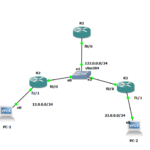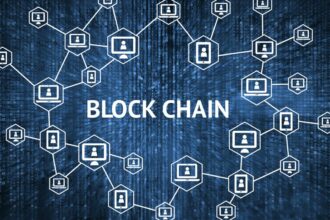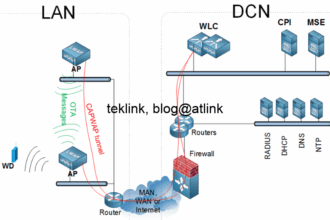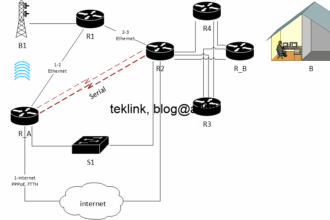In this post let’s detail the operation of PIM (Protocol Independent Multicast) in sparse mode. Previous posts tackled the operation of PIM dense mode. Let’s recall that PIM is the multicast routing protocol that allows PIM routers exchange information needed distribute multicast traffic to receivers.
Introduction
This blog is a part of a serie of blogs about multicast routing:
- Multicast routing: a step by step
- Multicast routing: PIM dense
- Multicast routing: From the source
- Multicast routing: Hold ASM for a moment
- Multicast routing: Rather than dense, sparse it and let’s meet at rendez-vous point
- Multicast routing: RPF
Lab setup

Instead of use PIM-Dense (flood and prune), seen in the previous post of this serie on Multicast operatoin, we use PIM-Sparse to build the forwarding path from the server to the client.
PIM-Sparse
PIM-Sparse is enabled on R1, R2, R3 and R4 routers
RIP for unicast routing (and RPF)
We use RIP for unicast routing and multicast a ping from the source for test purpose toward the group of receivers
IGMP
At R1 we check first that Client1 is registered to the group which is the case

The interface of router R1 facing Client1 is configured for PIM-Sparse
Enable PIM in sparse mode
The details of this PIM interface are given in the following figure. We can check that PIMv2 is enable at interface level in sparse mode, that the RP or Rendez-vous point for this mode is the router itself (R1). We have also counters for PIM neighbors, in/out multicast packets. We check also that multicast switching is fast (at hardware level) and not process switched (at CPU level).

All interfaces are configured for PIM-Sparse mode of operation
PIM neighborship
We check PIM neighborship established between R2 and R1 using the command show ip pim neighbor. We could check that now R2 is the DR (designated router) of this multicast link.

Now that PIM is enabled and neighborships established, let’s enable multicast routing and check the mroute table for effective multicast traffic forwarding
Mroute table

After a while the mroute table get populated by group 226.0.0.1 information. From the show ip mroute command output, we check the R1 is the RP for this group (marked as 0.0.0.0) that outgoing interfaces for this group are populated with fa0/0 towards Client1 as receiver. But nothing is the list of the incoming interface (Server1 has not yet sent any traffic). The RPF check is what guarantees the the source IP is resolvable the the same interface using our unicast routing protocol (in our case connected or RIP)

The RP Rendez-vous Point is set to local
Source trafic
Let’s send trafic from the server
At R4,

The router receives trafic from the source but fails routing it
The mroute table is empty of 226.0.0.1 group information
Debug multicast forwarding
We activate PIM on the fa0/0 interface (to enable multicast packets processing) and run a debug ip mfib pak

A debug on R1 shows the packet from the server fails the acceptance check. Is it due to sparse mode? Or in general? We put the interface into dense mode
the debug shows the output in the following figure. The flow is now accepted but fails because of no forwarding interface.

We configure back the interface into sparse mode
In addition, we configure R4 to be a RP (static) instead of R1.

Now the packet is accepted for forwarding
But because of no forwarding interface the packets are still dropped

We check also that R4 initiates the register process with the RP (which is R4 in our case)
At R4,

The mroute table is populated by (S,G) entry but it is pruned because of the outgoing interface list is empty
Let’s configure the RP on the other routers to match R4
At R1 as soon as we configure the RP address to match R4

We check that R1 build a join message for 226.0.0.1 and put it in R2 queue
At R2,

The router has no idea about RP and consequently invalidates the join received from R1
We configure the RP information on the remaining routers R2 and R3
Now the server is getting response from the client to the ping sent from the server to the multicast group

At R3 the mroute table shows

The RP information is correct and the RPF is set to R4 on the fa1/0 interface
RPF operation

Problem
The ping from the server stop working

Any idea?
As conclusion
In this post, we’ve checked the operation of PIM in sparse mode. The configuration of the RP is central to this mode of operation. From there all PIM routers build the forwarding tree toward the RP (using RPF rule to validate PIM exchanged messages). After this half of path is built, the second path is build from the server to the RP to join the first half of path already built. RPF is also in action to check that the source of the multicast traffic is also in the RPF path in terms of the unicast routing table.





